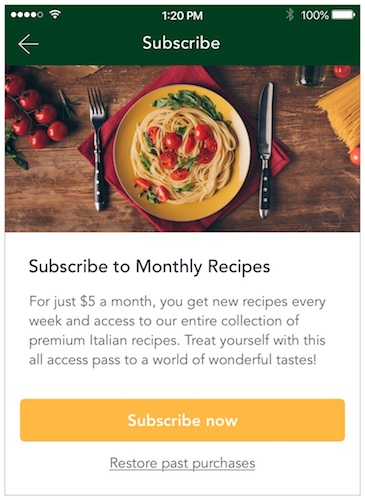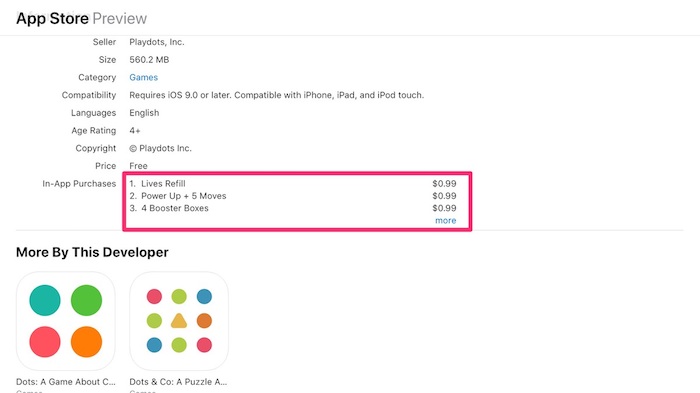How to Implement In-App Purchases on Your App

How to Implement In-App Purchases on Your App
Contributed ContentThere are several ways to monetize a mobile app, but one of the most effective models is in-app purchases. Generate revenue by charging for pro features that enhance the user’s experience.
How do you generate revenue with apps? There are a few app business models to choose from:
- Free or paid apps
- Freemium
- Ad-supported
- Subscriptions
You could even rely on sponsorships and native advertisements. So, which business model best fits your app?
In this article, we will take a closer look at a business model specific to apps: in-app purchases (IAP).
IAPs are especially suitable for iPhone and Android apps because they’re scalable, generate revenue from day one, and are incredibly simple to set up.
How to Implement an In-App Purchase Model for Your App
- Research app revenue generation models
- Learn the benefits of in-app purchases
- Chose premium features wisely
- Charge for features instead of cost-variable consumables
1. Research App Revenue Generation Models
To understand the benefits of the IAP model, we first have to take a look at other ways apps earn money.
When you look in the App Store today, you see a few common app business models:
- Free apps that don’t make any money, or at least not directly
- Paid apps, or apps that have a single purchase price
- Apps supported by ads or native advertising
- Apps that offer consumable in-app products such as content subscriptions and in-game upgrades
- Apps that offer pro upgrades through in-app purchases, either one-off or by subscription
Paid apps have a clear disadvantage: People are less inclined to try a new app if they have to pay for it upfront.
It’s easier to sell a paid upgrade to a user who has already tried your app than it is to sell a paid app directly. As a result, free apps get more “foot traffic” compared to paid apps. But how do free apps make money?
Another viable but disadvantageous business model is the ad-supported app. The app is free, and its publisher makes money when an app user sees or taps on an in-app advertisement.
Even though the cost per 1,000 impressions (CPM) on an ad-supported app averages between $3–$5, you still need tens of thousands of app users to recoup an app’s development and operating costs.
With more than 4 million apps in the App Store, it’s hard to stand out and acquire new app users. The ad model doesn’t easily scale from the start of your app venture because you don’t yet have enough users. The model is only attractive when you’ve already got a lot of app users.
2. Learn the Benefits of In-App Purchases
Look for an app business model that matches 3 requirements:
- It shouldn’t decimate “foot traffic” in the App Store, unlike paid apps
- It should be scalable and generate revenue from day 1, unlike the ad model
- It should charge users who get value from the app, unlike indirect models
The IAP business model satisfies all 3 requirements.
Here’s how it works:
- Develop an app and publish it for free in the App Store
- Designate a few of the app features as being “pro” features, and bundle them as IAPs
- Charge users a nominal fee to access those pro features
An advantage of the IAP business model is that free users can still use the app, benefit from it, and spread the word about it. Moreover, you can use the limited period in which free users benefit from your app to convert them into paid users.
Perhaps the biggest benefit of the IAP business model is that you can start generating revenue from day one.
When you launch your app, you can have a paid offering at the ready that your app’s users can purchase right away. You can then use the profits to acquire more users.
For example, you could monetize a recipe app by encouraging users to subscribe to additional features.

With the subscription, users could gain access to a library of premium recipes.
You’ve probably guessed that the core part of the IAP model is choosing pro features. So how do you know which features are the right ones to monetize?
3. Choose Premium Features Wisely
How do you get started with the in-app purchase business model? The most important step is figuring out what your premium features are going to be.
Let’s take a look at a few examples:
- The note-taking app Bear sells a pro subscription for $1.49 per month or $14.99 per year. That includes app themes and iCloud-based data sync between iPhone and Mac.
- The running app Run 5K sells a running plan upgrade for a one-time fee of $4.99. The plan helps users complete 5 kilometer runs beyond the initial 2 weeks of free plans.
- The mobile game Two Dots sells consumable in-app upgrades such as extra lives and power-ups for 99 cents.
When picking the right pro features, it’s important not to create "crippleware." You shouldn’t cripple a perfectly fine app by charging users for vital features. Instead, you figure out what extra features users are willing to pay for.
The Bear note-taking app is a good example. You can take notes without the pro upgrades, and it works perfectly fine.
At some point, you might want to also take notes on your Mac and sync them with your iPhone. However, those are pro features that you must pay for.
At that point, you’ve become a power user, and you’ll (hopefully) gladly pay for an upgrade.
A great way to figure out your pro features is to first build a simple free app. This is called a minimum viable product (MVP), like a prototype.
You use it to validate if there’s a demand for your kind of app. When your app has a few users, start working with them to design the kinds of extra features they’d be willing to pay for.
Quick tip: Can’t think of any pro upgrade ideas? See what your competitors are doing in the App Store.

Apps often display their in-app purchases in the App Store details page. For a game, that might be extra lives and power-ups.
There are a few pro features that work for many apps:
- The ability to export, sync, or import data from one app to the other. This can also be between your iPhone, Mac, and web apps.
- Customization options such as app color themes, extra settings that improve a user’s workflow, and the ability to work with additional file formats and external apps such as Shortcuts or IFTTT.
- A “more” feature to include additional storage, in-app items, processing power, support, content, game levels, or power-ups.
Choosing the right pro features is a large part of determining how successful your revenue generation will be.
But you have to be careful not to make your pro features depend on cost variables. Let’s take a look at the freemium model to compare.
4. Charge for Features Instead of Cost-Variable Consumables
The IAP business model is incredibly similar to the well-known freemium business model.
With freemium, a part of an app is free and the other part is paid. This split is often made between features that actually cost a business money, such as cloud storage, and app features that are free.
Consider a cloud storage app. You get X amount of storage for free, which is just enough to try out the app. If you want more storage, you’ll need to pay for a subscription. From a business perspective, the paid users pay the cost of the free user’s “free” storage.
This is a disadvantage because the free/paid split means you’ll need to watch your margins. Get too many free users, and your paid users can’t cover the cost.
The in-app purchase business model tries to alleviate this problem by not attempting to make variable costs part of the free product offering in the first place.
Instead of charging for consumables, you charge for features. It doesn’t matter if you sell a feature once or a thousand times; its cost stays the same.
This is where a pro upgrade excels without the typical caveats of the freemium model.
Once you’ve got an IAP offering set up, it’s smart to make it recurring.
Recurring revenue, with monthly or yearly subscriptions, strike the perfect relationship between customer and business. As long as the customer is happy with your product, the business makes money.
This, of course, puts a focus on perceived value. If a customer hasn’t experienced any value from your offering in a given month, you lose the customer’s subscription.
The IAP model is perfectly suitable for subscriptions.
Instead of offering a one-off pro upgrade, you can let users subscribe to a monthly or yearly subscription for the same upgrade.
You can also expand the pro upgrade over time with more features. And of course, it’s smart to give users 1–2 months free with the yearly option.
Monetize Your App With the In-App Purchase Model
The IAP business model is a viable alternative to generating revenue with apps.
To get started, you should look at the benefits and disadvantages of other business models, as well as of the potential pitfalls of the IAP model.
From there, you have to create a free app to attract users while monetizing pro features.
Make sure that you’re not relying on your power users to pay for your free users by monetizing cost-variable consumables. Instead, focus on features that enhance the user experience.
